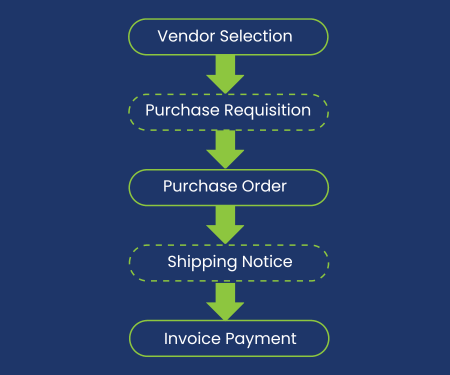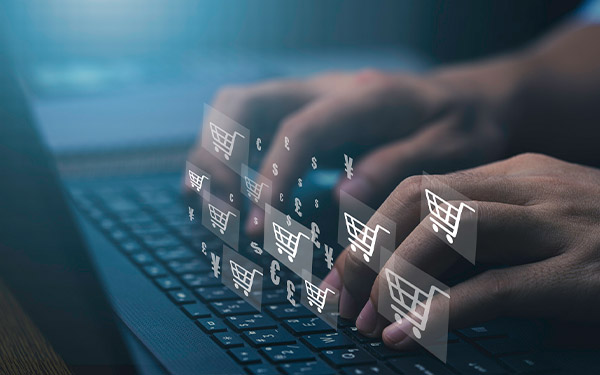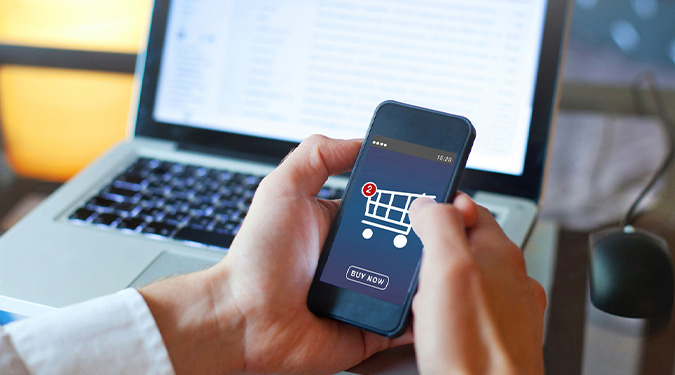Table of Contents
The procure-to-pay (P2P) process is when organizations obtain the goods and services they need to conduct business operations. The assets acquired via procure-to-pay software can range from office stationery to the raw materials the business uses to manufacture its products.
The term “procure-to-pay” can be used in a few different contexts. First, it refers to the procurement and payment process with everything involved in sourcing, ordering, and paying. Second, it refers to software that facilitates procurement and finance processes, especially software that helps businesses streamline and consolidate the individual components of their procurement processes.
There are 150+ procurement software platforms connected to TradeCentric. Some notable providers include:
Let’s look at what P2P involves and how iPaaS solutions can help businesses using procurement solutions reduce costs and increase purchasing efficiency.
The Components of the Procure-to-Pay Process
Procure-to-pay can sometimes be referred to as end-to-end procurement because it encompasses everything involved in obtaining goods and services from B2B suppliers. It starts with a procurement professional or other employee recognizing the need to purchase goods or services from another business, and ends with delivery and payment.

This process is an umbrella term encompassing many individual processes, often across several different business departments, including the department that initiates a procurement request, the procurement and finance department, vendor invoice, account payable systems, and the accounts payable department.
The individual processes involved in a typical procure-to-pay cycle include:
- Vendor selection and supplier relationship management: The procurement/purchasing department is typically responsible for vetting, selecting, and negotiating with B2B suppliers.
- Creating and approving a purchase requisition: A purchase requisition is a document that initiates a procurement request within the company’s larger pay process. It includes details about purchase order, the company’s accounting system, products and services to be procured, their cost, and other purchase-to-pay details. A purchase requisition must be approved before an order is sent to a supplier, usually by a procurement manager or the accounts department.
- Creating and sending a purchase order: Once a requisition order is approved, a purchase order is created and delivered to the chosen supplier. Purchase request orders include product descriptions, shipping addresses, and invoicing information. Once accepted, the approved purchase requisitions order forms the basis of the agreement between the buyer and the supplier.
- Shipping and delivery notifications: On-time delivery of goods and services might also involve an Advanced Shipping Notice (ASN), which is an electronic document suppliers send buyers to provide advance notification of a pending shipment. ASNs are commonly used in the procurement process to provide buyers with detailed information about incoming shipments, such as the shipment’s contents, the date and time of delivery, and the carrier and tracking information.
- Creating and delivery of an invoice: Invoices must be verified against the purchase order and the goods delivered. The final process is paying the invoice and entering the payment in the business’s own accounting system or software.
The P2P process must be followed correctly, and documents must be exchanged without error. Multiple software systems are required, including the accounts payable system and other procure-to-pay operations.
This may happen dozens or hundreds of times a day for large organizations, and it can be a time-consuming process without a viable procure-to-pay solution within the entire process.
Achieving Procure-to-Pay With Integration and Automation
The costs associated with procure-to-pay errors, inefficiencies in purchasing contracts, and other critical errors in the procurement process are substantial. That’s why many purchasing organizations adopt software platforms to streamline and automate some or all of these processes within the procure-to-pay cycle.
The adoption of B2B commerce integration by suppliers, eProcurement, and spend management systems are steps towards achieving automation and integration. eCommerce integration allows buyers to select goods and services intuitively while streamlining order management and invoice processing for suppliers.
eProcurement helps buyers automate requisition, approval, contract compliance, and invoicing. With an eProcurement platform, procurement processes can be standardized, data is centralized, and documents are communicated in digital formats between stakeholders within the organization.
But neither eCommerce nor eProcurement provides a true procure-to-pay system. As you may have noted in the previous section, the full procure-to-pay process involves the communication of data both within organizations and between organizations. eCommerce and eProcurement can’t automate or centralize key procurement and purchasing processes without the technology that facilitates the transfer of information between buyer and supplier.
This multi-organizational data transfer is the central benefit of a true procure-to-pay integration platform as a service (iPaaS). Like the procure-to-pay process, iPaaS companies provide technology and services that automate the data flow between B2B buyers and suppliers. Here are some of the most commonly used solutions:
- PunchOut catalogs: PunchOut catalogs integrate B2B eCommerce stores with eProcurement platforms. They allow a buyer to select an approved seller’s catalog from within their eProcurement platform and shop as normal. Instead of checking out, they transfer the shopping cart data back to the eProcurement system, and a requisition order is automatically created.
- Purchase Order Automation: Once a requisition order is approved by the buyer’s procurement team or purchasing department, purchase order automation creates a purchase order and routes it to the seller’s eCommerce and/or backend order management system to fulfill purchase requisitions therein.
- Invoice Automation: As you might expect, invoice automation (otherwise known as eInvoicing) automates the exchange of vendor invoices and other documents between seller and buyer. The ability to submit invoices electronically and customize other accounts payable functions can be a game-changer in today’s busy procurement space. Having a sophisticated procure-to-pay solution can also help companies set up early payment discounts and other critical data exchanges throughout the pay process.
What Are the Benefits of an iPaaS Solution?
The main benefit of iPaaS solutions for B2B buyers is that reliable data is always available in their eProcurement platform without manual data entry. A lack of integration often causes poor compliance with the procurement management processes, leading to rogue spending and inadequate oversight. But with a specialized software provider that can quickly and accurately transfer data between platforms, buyers can improve supplier relationships and bring more sellers under the control of spend management processes.
iPaaS solutions that provide B2B integration and process automation also accelerate the entire procure-to-pay process by ensuring that procurement documents are immediately available to both buyer and seller. Rather than sitting in an email inbox, purchase requisition orders and invoices are always available to the relevant employees. End-to-end procurement reduces supplier lead time and enhances the agility of B2B procurement.
Reduce Manual Labor and Errors in the Procurement Process
Furthermore, these solutions reduce manual labor and the errors it introduces in the procurement process. Before eCommerce and eProcurement, the time of both procurement teams and B2B sales professionals was consumed with massive amounts of paperwork. Digitization on the buy-side and the sell-side reduced the time-consuming, manual process of manual document creation and data entry, but it didn’t eliminate it.
If buy-side and sell-side platforms aren’t integrated, data must still be entered by hand. Requisition orders, purchase orders, and invoices are communicated via email, and the data is manually added to the relevant platform. With an iPaaS solution, there is no longer any need for error-prone manual data entry.
In short, iPaaS providers streamline the procurement process, enable suppliers to integrate buyers and sellers into automated systems, reduce procurement costs, and improve the quality of data on both sides of a transaction.
Is Procure to Pay Software Right for Me?
Determining if procure-to-pay (P2P) a software solution is right for your business involves assessing your procurement vendor payment processes and identifying areas that could benefit from automation and integration with payable systems. Here are some steps you can follow to determine if P2P software is suitable for your business:
- Evaluate your current procurement processes: Identify the strengths and weaknesses of your current procurement processes. Determine any bottlenecks, inefficiencies, or areas where automation could save time and reduce errors.
- Analyze your procurement volume: Determine the volume of procurement transactions your business conducts. If you have a high volume of transactions, automating the P2P process could save significant time and resources.
- Assess your budget: Determine if your budget can support the implementation of P2P software. Consider the upfront costs of software, implementation, and training, as well as ongoing maintenance and support fees.
- Identify your requirements: Determine your business’s specific procurement needs and requirements. Consider factors such as the types of goods and services you procure, the number of suppliers you work with, and the level of automation you require.
- Research P2P software solutions: Research different P2P software solutions available in the market and compare them based on your requirements and budget.
- Consult with experts: Seek advice from procurement experts or software vendors to help determine if P2P software is the right fit for your business.
Get Started with TradeCentric Today
To learn more about how TradeCentric can help your business benefit from procure-to-pay integration, supplier management and supply chain automation, contact us today.




